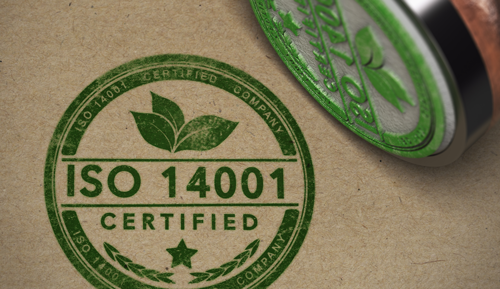ISO 14001:2015 - What exactly are "compliance obligations"?
Compliance obligations are the legal requirements an organisation must comply with and non-mandatory requirements that an organisation chooses to commit to.
In ISO 14001:2015, environmental compliance obligations, combined with other elements such as environmental aspects, set the foundation for an organisation’s environmental performance and implementation of its Environmental Management System.
In this blog, I will breakdown the compliance obligations that arise from mandatory and non-mandatory requirements, describe the compliance obligation requirements for clause 6.1.3 and other clauses in ISO 14001:2015 and provide a brief explanation of transitional provisions.
Clause 6.1.3 of ISO 14001:2015 in a nutshell
Below are the four main components of Clause 6.1.3 of ISO 14001:2015. I will explain each component in this blog.
- Determine and document obligations
- Act to ensure compliance with these obligations
- Evaluate compliance with the obligations
- Correct non compliances.
Mandatory versus non-mandatory compliance obligations
In ISO 14001:2015, compliance obligations (previously termed “legal and other requirements”) can arise from mandatory requirements (eg. applicable acts/regulations and contracts), or non-mandatory requirements and voluntary commitments (eg. codes of practice, EPA guidelines, voluntary agreements and even expectations of third parties).
Mandatory requirements
Mandatory requirements include (as applicable to your operations):
- Applicable acts and regulations (Commonwealth and State/Territory)
- Environmental local council laws
- Australian or international standards called up in legislation
- Codes of practice called up in legislation
- Site licences, permits, trade waste agreements or consents
- Notices (from authorities)
- Internal corporate requirements and environmental management targets set by top management
- Contractual relationships with third parties (eg. waste disposal contracts)
- Orders, rules or guidance from a regulatory agency.
Non-mandatory requirements or voluntary commitments
Non-mandatory requirements or voluntary commitments may include (as applicable to your operations):
- Codes of practice, guidelines and other documented information published by government that are not called up in current legislation
- Australian, international standards or industry standards not called up in current legislation
- Relevant organisational standards published by professional bodies
- Voluntary commitments to government (these may become mandatory upon signing)
- Voluntary commitments in response to the specific needs and expectations of interested parties
- Other interested party requirements related to your Environmental Management System
- Voluntary targets set for environmental protection (eg. Energy reduction, water use reduction, recycling).
These non-mandatory requirements and voluntary commitments become environmental compliance obligations when an organisation chooses to commit to them.
It is best practice to document, in an Interested Parties Register, the needs and expectations of interested parties that have been adopted as compliance obligations. Read this blog for further explanation on interested parties in relation to Clause 4.2 in ISO 14001:2015.

Meeting the compliance obligation clause in ISO 14001:2015
In Clause 6.1.3 of ISO 14001:2015, organisations are required to “maintain documented information of their obligations” and “determine how these obligations apply to the organisation” to achieve compliance with them.
Compliance obligations must also be periodically evaluated, and corrective actions implemented to address any noncompliances.
Determining your environmental compliance obligations
Your environmental aspects can play a significant role in helping you determine your environmental compliance obligations.
Other ways you can determine your compliance obligations:
- Source information on your environmental compliance obligations by:
- using our online directories EnviroLaw or HSE LawGuides,
- engaging an external source such as an environmental consultant, or
- manually searching through websites that provide relevant information on environmental legal obligations.
- Identify compliance obligations in your organisation’s licences, permits and agreements, for example EPA licences, trade waste agreements/consents or contracts.
- Identify your compliance obligations from internal corporate documents, for example your environmental policy, or standards, objectives or requirements from your head-office.
Documenting your environmental compliance obligations
Document all identified compliance obligations, including the needs and expectations of interested parties you have committed to, in a register.
It may be helpful to section the compliance obligations into their specific areas making it easier for monitoring and auditing purposes.
Here is an example of a Compliance Obligations Register used in our Environmental Management System documentation package.

Updating your environmental compliance obligations
Once your compliance obligations have been identified and documented in a register, you need to ensure they are regularly reviewed to keep the register up to date. Updated environmental legal requirements from new legislation and other sources may impact your environmental aspects, your management’s systems documentation and procedures and your overall legal compliance.
It is important to have good processes to effectively monitor when legislation or other compliance obligations change. Our online directories, EnviroLaw and HSE LawGuides, provide monthly updates on all environmental legislation and publication changes straight to your inbox.
Alternatively, you can perform your own internal manual update process. Just make sure this is scheduled in and is conducted regularly.
No matter which method you choose, make sure you retain records of when these reviews take place. I suggest including the following in these records:
- Notes on the specific changes
- List of changes to your management system documentation and procedures from these changes
- Evidence of communication of these changes
- Date of review and name of person who completed it.
Ensuring compliance with compliance obligations
Once you have identified your compliance obligations (or updated them), work systematically through each compliance obligation and ensure you have adequate operational controls in place to ensure compliance. Details of these operational controls should be included in either your Environmental Aspects Register or the Compliance Obligations Register.

Evaluating compliance with your environmental compliance obligations
Evaluating the fulfilment of your compliance obligations is a requirement of Clause 6.1.3 and of Clause 9.1.2 (Evaluation of compliance).
Evaluations can vary in frequency and timing depending on factors such as the risk of noncompliance or your operating conditions but, at a minimum, all compliance obligations should be evaluated at least annually.
Understanding your compliance status helps stay compliant and avoid incidents and prosecutions, and helps in continually improving your management system to achieve its intended outcomes.
Compliance evaluation results need to be communicated to top management and even interested parties as appropriate.
How other ISO 14001:2015 requirements relate to compliance obligations
Clause 4.3 (Scope of the Environmental Management System)
Compliance obligations cannot be “scoped out” of the environmental management system.
Clause 5.2 (Environmental policy)
ISO 14001:2015 requires that your environmental policy includes a commitment to fulfil your compliance obligations.
Clause 6.1.1 (Actions to address risks and opportunities) & 6.1.4 (Planning action)
You need to have the relevant processes and procedures in place to address and act on the risks and opportunities related to your compliance obligations.
An example of a risk is your organisation failing to comply with a compliance obligation resulting in damage to their reputation. An opportunity is your organisation performing beyond their legal requirements and enhancing their reputation.
Clause 6.1.2 (Environmental aspects)
As previously mentioned, environmental aspects play an important role in helping determine your environmental obligations, and identifying your environmental obligations can also help in determining your significant environmental aspects.
Clause 6.2.1 (Environmental objectives)
You need to consider your compliance obligations when developing the environmental objectives for your environmental management system.
Clause 7.2 (Competence)
Workers with Environmental Management System responsibilities related to fulfilment of your compliance obligations, must have the competence to fulfil those responsibilities.
Ensure the appropriate training is assigned and evidence of competence is retained.

Clause 7.3 (Awareness)
All workers are required to have a general awareness of your organisation’s compliance obligations and implications of noncompliance.
Clause 7.4 (Communication)
When establishing communication processes, consider your compliance obligations. Ensure any compliance obligations related to external communication (eg. reporting to EPA or the water authority) are fulfilled.
Clauses 9.1.1 (Monitoring, measurement, analysis and evaluation) & 9.1.2 (Evaluation of compliance)
Regularly assess (audit) compliance with your compliance obligations. Communicate relevant environmental performance information both internally and externally, as identified in your communication processes and as required by your compliance obligations.
Clause 9.3 (Management review)
The results of compliance obligation assessments (audits) should be reported at every Management Review meeting. This is essential to top management’s fulfilment of their obligations in ISO 14001:2015.
Transitional provisions
When an Act is passed by parliament, or a regulation signed into law, its requirements may come into operation (ie. become mandatory) either immediately or on a prescribed date. Individual sections of the legislation may come into operation on different dates. This information is called “transitional provisions”.
Transitional provisions provide organisations a grace period to implement the necessary changes required to comply with the new legislation. The appropriate transition dates are included in each new piece of legislation.


